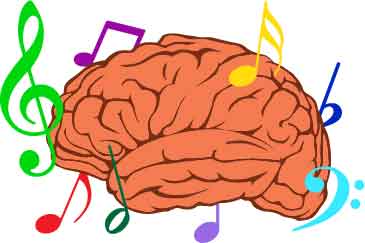Recreating memories with new forms of interaction
Professors discussed how to improve quality of life for those with Alzheimer’s.

Elizabeth Kaiser graphic.
With an aging population, the United States will be comprised of mostly older adults by 2050. An estimated 10 percent of adults over the age of 65 are diagnosed with Alzheimer’s Disease, the most common cause of dementia. Dementia impacts cognitive abilities, making tasks difficult. So, how can caretakers improve the quality of life for individuals with Alzheimer’s?
Dr. Kameko Halfmann, Assistant Professor of Psychology at the University of Wisconsin-Platteville, and Becky Fernette, Senior Lecturer of Psychology at UW-Platteville, spoke during a faculty forum about how Alzheimer’s is impacting the population and what caretakers can do to improve the quality of life for patients.
Halfmann’s graduate research was focused on emotion and decision making in healthy adults, and her research into Alzheimer’s went well with her interest in aging adults.
“When I was in high school, I found myself interested in human behavior. I veered from literature and fiction to psychology in college. I wanted to have a concentration in neuroscience. Slowly, I got involved in research, and I ended up getting even more interested in the field and I ended up pursuing a degree in neuroscience at the University of Iowa,” Halfmann said.
Halfmann began the presentation with an activity. She asked the audience to think of a memory, including the sights and sounds that went along with it. She then asked the audience to think about how the memory goes along with who they are individually and how it helped to describe them. The purpose of this activity was to engage the audience and show them that identity goes along with memory, but memory is not the only way people can share themselves with others.
Halfmann explained that when talking about causes of Alzheimer’s there is more than one factor. Researchers cannot look at a person’s genetic makeup alone, rather, they must look at a variety of factors.
“Alzheimer’s Disease is the cumulative result of many small risk factors, and about 90 percent of individuals with Alzheimer’s Disease are over the age of 60,” Halfmann said.
Some of the uncontrollable factors that Halfmann brought to attention for increased causes of Alzheimer’s were head traumas, genetics, age and exposure to environmental toxins.
Halfmann then explained the stages of decline for Alzheimer’s, noting the symptoms that go along with them. The first stage is preclinical, where the patient appears normal, but early changes occur in the brain. The second stage is the prodromal, where some forgetfulness occurs. The third is mild Alzheimer’s Disease dementia, where the patient may start having problems with finding words or misplaced items. The forth stage is moderate Alzheimer’s Disease dementia, where forgetfulness of events occurs and confusion may begin. The fifth and final stage is severe Alzheimer’s Disease dementia, where the patient needs constant attention. The stages occur at different times depending on the individual, and the treatment can also vary. Halfmann emphasized how a caretaker’s patience is very important with memory loss patients.
“I hope people were able to learn about what Alzheimer’s is and what it isn’t. I also hope people learn how to interact with those who suffer from Alzheimer’s Disease or have some sort of memory loss because it can be challenging and frustrating, but it is important to learn how to go with the flow and not push for things,” Halfmann said.
Halfmann ended her lecture with a discussion on how our memory is made of various systems that impact long-term and short-term memory.
“Skill-based memories are preserved more in Alzheimer’s Disease than the non-skill-based memories,” Halfmann said.
Fernette added to Halfmann’s presentation with information about how to improve the quality of life for Alzheimer’s patients and what resources are available in the community.
As a social worker, Fernette has worked with Alzheimer’s patients and she quickly became familiar with the resources available. It wasn’t until her mother was diagnosed with the disease that Fernette became interested in investigating it more.
“As a family member, it became really challenging to find out how to navigate the system. It was really eye-opening for me to see how hard it really is to find your way through this disease,” Fernette said.
Fernette discussed the ways in which individuals experience Alzheimer’s and how symptoms can differ depending on the individual. The disease could manifest at a particular time of day or it could be diagnosed along with other health issues. There are also consequences for the caregivers, impacting attitude, energy and overall well-being.
“I will take away how to care for yourself as a caregiver while also making sure you are giving the patient their best quality of life. It is really about the quality of life for both individuals,” senior criminal justice major Ashley Pikalek said.
Fernette played a video showing how music can have positive impacts on Alzheimer’s patients. In the video, a patient was slumped in his chair, not responding to the interviewer. After the caretaker offered the music, the man began to sing along, brighten up and started dancing around. The interviewer in the video was able to interview him after listening to music and the man talked about how he used to play and loved music when he was younger.
“I really enjoyed the music aspect of the presentation. It brings so much joy to the lives of Alzheimer’s patients. I have seen the video before, and it still brings tears to my eyes,” junior clinical psychology major Katie Satterfield said.
Fernette concluded the discussion by sharing some community resources for memory loss patients, including the Memory Café, Alzheimer’s Association and Senior Resources Center.



